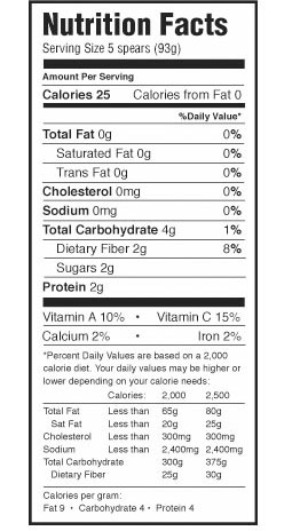Asparagus, Considered a Delicacy Since Ancient Times
TEXARKANA, Ark. – Asparagus was first cultivated about 2500 years ago in Greece. The name is a Greek word, meaning stalk or shoot. The Greeks believed asparagus was a herbal medicine which, among other things, would cure toothaches and prevent bee stings.
Second century Physician, Galen, described asparagus as "cleansing and healing". Claims for medicinal benefits of asparagus persist to this day. The Romans became great lovers of asparagus, and grew it in high-walled courtyards. In their conquests, they spread it to the Gauls, Germans, Britains and from there, the rest of the world. It came to the United States in the l870's.
Asparagus is considered as a delicacy by many. Yet many are perplexed by this thin, green stalk wondering how you buy it, store it or even cook it.
When buying asparagus, look for closed, compact tips, smooth, round spears and a fresh appearance. A rich green color should cover most of the spear. Stalks should be tender almost as far down as the green extends. Over mature asparagus is tough and has a poor flavor. Avoid excessively sandy asparagus, sand grains can lodge beneath the scales or in the tips of the spears and are difficult to remove in washing.
Due to its delicate nature, asparagus should be cooked the same day it is purchased. If you wish to keep it longer, it should be kept cold and covered. Trim the stem end about ¼ inch and wash in warm water several times. Pat dry and place in
moisture proof wrapping. Refrigerate and use within 2 – 3 days for best quality. To maintain freshness, wrap a moist paper towel around the stem ends, or stand upright in two inches of cold water.
Asparagus is the leading supplier among vegetables of folic acid. A 5.3 ounce serving provides 60% of the recommended daily allowance for folacin which is necessary for blood cell formation, growth, and prevention of liver disease. Its wealth of nutrients, fiber and very low sodium and calorie content make asparagus a nutritionally wise choice for today's health-conscious consumer.
Asparagus is low in calories, only 20 per 5.3 oz. serving, less than 4 calories per spear. It also contains no fat or cholesterol, is very low in sodium, a good source of potassium, a significant source of thiamin and vitamin B6. It is also one of the richest sources of rutin, a compound which strengthens capillary walls.
How do you cook this delicacy to preserve all those nutrients? There are several methods. In a saucepan or steamer, cook fresh asparagus in a small amount of boiling water until tender. Fresh asparagus will be crisp-tender in 5 to 8 minutes. Try stir-frying by cutting spears diagonally in 1/2 inch pieces, leaving tips whole. Stir-fry pieces in butter or hot oil, in a skillet or wok at medium high heat. Stir constantly until tender-crisp, 3 to 5 minutes.
You can also microwave fresh asparagus by placing one pound in a microwavable baking dish or serving bowl. If cooking whole spears, arrange with tips in center. Add about 1/4 cup water and cover tightly. Microwave at 100% power for 4 to 7 minutes for spears, 3 to 5 minutes for cuts and tips. Stir or turn halfway through cooking time.
Why not give this unusual vegetable a place at your dinner table. You might just find that it has become a favorite vegetable of yours. Fresh Parmesan Asparagus goes great with poultry or fish and is a quick vegetable for those busy nights.
If you have questions while preparing asparagus, or how it can fit into your meal, contact me at the University of Arkansas Cooperative Extension Service, Miller County, 400 Laurel * Suite 215, Texarkana, AR, call me at 870-779-3609. You can also reach me by e-mail at Chaley@uada.edu. Be sure to follow me on facebook for more tips and recipes at facebook.com/millercountyfcs
Fresh Parmesan Asparagus
20 medium fresh asparagus spears, trimmed
2 tablespoons olive oil
2 tablespoons grated Parmesan cheese
1/4 teaspoon garlic salt
Pepper to taste
Brush asparagus spears with olive oil; place on a baking sheet coated with nonstick cooking spray. Bake, uncovered, at 400 degrees F for 6 minutes; turn asparagus. Bake 6 minutes longer or until asparagus is tender. Combine Parmesan cheese, garlic salt and pepper; sprinkle over asparagus and serve. Yields 4 servings.
By Carla Haley-Hadley
County Extension Agent - FCS
The Cooperative Extension Service
U of A System Division of Agriculture
Media Contact: Carla Haley-Hadley
County Extension Agent - FCS
U of A Division of Agriculture
Cooperative Extension Service
400 Laurel Street, Suite 215 Texarkana AR 71854
(870) 779-3609
chaley@uada.edu
Related Links
